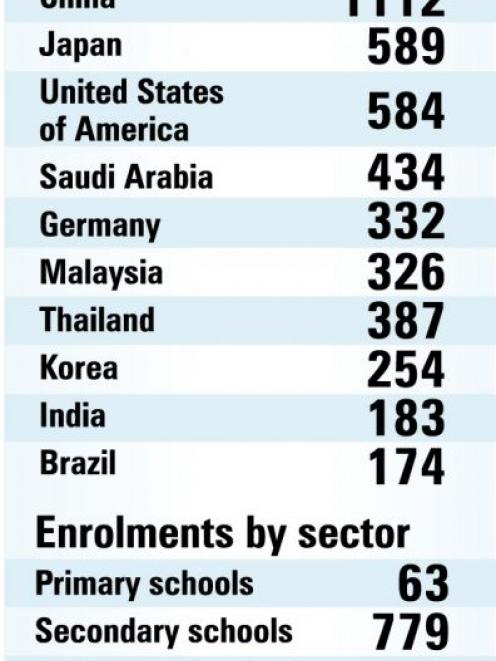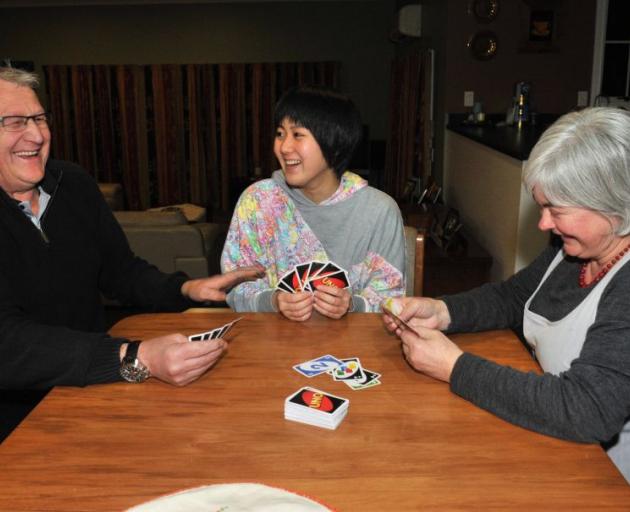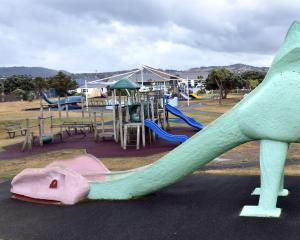Dunedin has set the ambitious goal of doubling the value international education brings to the city to $330 million a year by 2023. Tertiary Education reporter Vaughan Elder talks to some of the city's key players about how they plan to meet this aim and what the about 5000 international students who come to Dunedin every year bring to the city.

The challenge is getting more students - most of whom will have never heard of Dunedin - to take that extra flight and remain in the city once they get here.
With the average international student contributing well over $40,000 annually to the Dunedin's economy, it's not hard to see why Dunedin City Council has targeted ''export education'' as a growth area through its economic development strategy.
The key players were also keen to stress having international students in Otago - who came from 97 countries ranging from China to Azerbaijan - added to the cultural vitality of the region and improved the experience of local students.
Everyone agreed boosting income by bringing in more students was not going to be easy. Numbers have slipped since 2011.
That downward trend appeared to be continuing this year, with 3768 international students in Otago at the end of the first trimester, down from 3999 at the corresponding time last year.
The figures made clear how important the Chinese market was to the region. Students from China made up 1112 of the 5808 international students in Otago last year - up from 644 of 5195 in 2009.
The city's newly appointed export education co-ordinator Sarah Gauthier, who previously worked for Education New Zealand, has been tasked with turning the trend around through the city's ''project education uplift''. She is passionate about achieving that goal.
''I did a master's degree in international education. This is my life,'' she said.
The strategy she was working on with the help of Dunedin's education sector was largely about building the Dunedin brand.
There was need to tell an ''engaging and compelling story about Dunedin'' centred around selling the city as a ''high-quality destination'' and showing off the city's education history.
''It's a high-quality destination, dedicated to education, where students can feel well supported and able to grow in a safe environment.''
Increasingly there was realisation it was not sustainable for so many international students to keep going to Auckland.
''So 60% of international students are in Auckland and the Government and the regions have realised that we need to distribute this capacity more effectively across the country, because Auckland is becoming overloaded.''
She expected the work would take time to bear fruit.
''I think if we commit to the project over the next three years we will begin to see results.''
Efforts could be complicated by what happened globally. The high New Zealand dollar and increasing competition from offshore were making it more difficult.
''There are always factors that are out of our control, in terms of how the global economy is changing, how what used to be [some of] our biggest sources of students [e.g. Malaysia and Singapore] have now become our biggest competitors.''
Otago Girls' High School principal Linda Miller, who is the secondary school representative on the city's new ''project education uplift'' advisory board, noted barriers to attracting international students south.
''You are fighting against a lack of knowledge about New Zealand, but you are also fighting against discrimination from other parts of the country.''
''There is the perception of the cold climate. Often it's a perception sown from other organisations throughout New Zealand: 'Oh you don't want to down south. It's too damn cold'.''
Ultimately, Dunedin institutions had to fight to justify that ''extra plane ride''.
In order to do this the Dunedin education sector was now working together to sell the Dunedin brand. The time was right to sell what the city had to offer.
''If you are wanting your child to learn English and enjoy the Kiwi lifestyle then being one of 200 [international students] in a secondary school [in Auckland] is not going to give you anything like the experience you will get being one of six in Dunedin.''
With international secondary pupils paying tuition fees of between $12,000 and $15,000, the benefits were obvious.
''It's about making up the shortfall in funding from the Government in order to provide the facilities and opportunities that we would like to.''
In an increasingly globalised world it was also important local students were exposed to people from other parts of the world.
Tertiary Education Minister Steven Joyce supported Dunedin's target, which was even more ambitious than the Government's aim to double the economic value of New Zealand's international education sector to $5 billion by 2025.
''I'm in favour of [it being more ambitious] because historically the city has been a little underdone for international students,'' he said.
Mr Joyce, who has not shied away from being critical of University of Otago's previous efforts to attract international students, said the situation had turned around.
''We have got past the idea of whether it is a good idea or not and everyone is focused on actually achieving an increased number of students.''
Apart from the income they brought, hosting international students was also important for the city through connections forged with trading partners. Otago University international pro-vice chancellor Prof Helen Nicholson, also on the ''project education uplift'', said Mr Joyce's past criticism of the university was largely to do with the cap it had on international numbers.
''I think he has perceived that we wanted to limit the number of international students and we did have a limit of 12% and that has now risen to 15%,'' Prof Nicholson said.
The university was now more determined to lift international student numbers and treated the 15% cap as a target.
''I think the environment has changed and I think there is a real willingness, from the chancellor and vice-chancellor down, we need to get up to that 15%.''
She was pleased with new-found co-operation between the city's institutions, which included Otago Polytechnic.
''I think it's really exciting that the DCC are employing Sarah Gauthier, because she has got energy and skill and it's important that the institutions in Dunedin work together.''
It was ''difficult to tell'' when international numbers at the university - which had declined since 2010 - would increase, but it was hoped it would happen next year.
She accepted global trends would always have a large part to play.
''You have to accept that's the case, and do what you can to [try to] develop the market.''
''Because if we just sit and do nothing we will be told off by Mr Joyce and probably quite appropriately.''
Here to learn
• The top-performing students normally stay in China and most often it is the students/pupils who don't make it in to the top schools who are sent to New Zealand.
• 5808 international students studied in Otago last year, contributing an estimated $165 million to the region's economy.
• Twenty-four countries, including Palestine, Afghanistan, Cuba and Peru, each sent only one student to Otago.
• Despite a raging civil war in Syria, the number of students from there in Otago increased from one in 2012 to five last year.
Joining in family life

Mrs Burrows, who has hosted overseas students since 2000, says the most important thing about being a host family is treating international students as one of the family.
Miho, who is studying at Otago Girls' High School, said she was enjoying Dunedin so far and the biggest difference from back home was how small the buildings were here.












